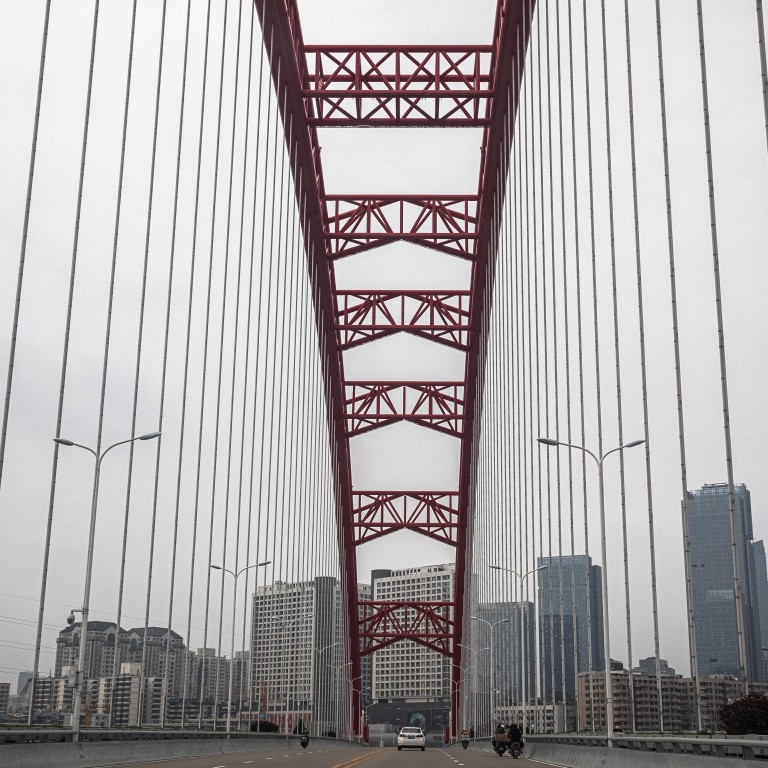
Wuhan lockdown led to dramatic cut in global spread of coronavirus, researchers say
- Other countries had a marked increase in imported cases from other parts of mainland China in the weeks after the travel limits went into effect, study says
- Restrictions also delayed arrival of pathogen in other Chinese cities by nearly three days, another study finds
The restrictions also dramatically curbed the number of domestic infections, another team found.
The researchers’ conclusions were reported in two papers published in Science magazine, looking at the impact of the travel ban and other contingency measures imposed in Wuhan, where the virus was first detected.
One study, led by Matteo Chinazzi from the Laboratory for the Modelling of Biological and Socio-technical Systems at Northeastern University in Boston, used a global model of disease transmission to generate possible epidemic scenarios.
The team, which included researchers from Italy and mainland China, considered a range of factors in the model, from the number of newly generated infections to the time of disease arrival in each subpopulation and the number of travelling infection carriers.
The number of infection cases spreading from China to other countries showed a marked decrease immediately after the Wuhan lockdown but picked up again in the following weeks, with cases spreading from other mainland cities and countries.
“The model indicates that after the travel restrictions in Wuhan are implemented on January 23, the top five ranked cities as the origin of international case importations are Shanghai, Beijing, Shenzhen, Guangzhou and Kunming,” they said.
By the end of February, Japan was the top source of the virus spreading outside China, accounting for 14 per cent. It was followed by Thailand, South Korea, Taiwan and the United States.
The researchers also stressed the importance of transmission reduction measures, especially those by local communities in other countries, in curbing the global spread of Covid-19, the disease caused by the coronavirus.
The study said that reducing both travel and transmissibility led to a “much larger synergistic effect”, which could be seen in delayed epidemic activity on mainland China and the number of internationally imported cases.
The researchers also said that a large number of imported infected individuals from mainland China were undetected and went to other parts of the world.
“The Wuhan shutdown was associated with the delayed arrival of Covid-19 in other cities by 2.91 days. Cities that implemented control measures pre-emptively reported fewer cases, on average,” the researchers said.
Together with the travel ban, measures to suspend public transport moving within the city, close entertainment venues and ban public gatherings “delayed the growth and limited the size of the Covid-19 epidemic in China, averting hundreds of thousands of cases by February 19”.
Build-up to lockdown: inside China’s decision to close Wuhan
“This delay provided extra time to prepare for the arrival of Covid-19 in more than 130 cities across China but would not have curbed transmission after infection had been exported to new locations from Wuhan,” the paper said.
The study was led by Tian Huaiyu from the State Key Laboratory of Remote Sensing Science, College of Global Change and Earth System Science at Beijing Normal University, and included researchers from mainland China, Britain, the United States and Hong Kong.
Banning travel to and from Wuhan kept nearly 1 million more people in the city before Lunar New Year compared to previous years and stopped almost all travel after the holiday.
While China was once the epicentre of the coronavirus outbreak, the US and Europe have become the new centres of the pandemic, which has infected more than 1 million people and killed over 52,000 people.
Sign up now and get a 10% discount (original price US$400) off the China AI Report 2020 by SCMP Research. Learn about the AI ambitions of Alibaba, Baidu & JD.com through our in-depth case studies, and explore new applications of AI across industries. The report also includes exclusive access to webinars to interact with C-level executives from leading China AI companies (via live Q&A sessions). Offer valid until 31 May 2020.

